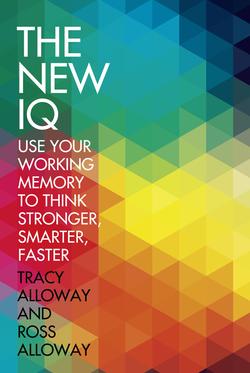Читать книгу The New IQ: Use Your Working Memory to Think Stronger, Smarter, Faster - Tracy Alloway - Страница 53
Be Still and Be Happy
ОглавлениеMeditation has long been linked to a sense of calm happiness. In a 2007 trial, Richard Davidson and colleagues at the University of Wisconsin-Madison used functional MRI brain imaging to see what changes in the brain occur during meditation. The team enlisted expert meditators, many of whom had over 37,000 hours of meditation experience, as well as a group of novice meditators. As the participants meditated in the brain scanner, they were barraged with distracting sounds, such as restaurant noise, a baby cooing, or a woman screaming. The researchers found that compared to the novices, those with the most meditation experience were better able to filter out the distractions. The brain scans also showed greater activation of the PFC—the home of working memory—in the most experienced group. The PFC was recruited because the brain scans were conducted during concentration meditation, a form of meditation that involves focusing attention on a small visual image or on the breath, a technique that requires working memory.
Amishi Jha and her colleagues at the University of Pennsylvania took this discovery a step further and found a more direct relationship among meditation, a strong working memory, and feelings of happiness. She looked at U.S. Marines who were feeling stressed before they were deployed for duty. One group meditated for thirty minutes every day for eight weeks and the other group for twenty minutes a week for eight weeks. After that period, the participants were asked to rate their positive and negative moods. The group that practiced for thirty minutes a day had higher working memory scores at the end of the eight weeks and reported more positive moods than the group that meditated less. We would speculate that the improvement in working memory enabled the Marines to more successfully filter out negative, stressful thoughts and instead focus on positive thoughts, thus improving their moods.
At the beginning of this chapter we met “Super Mario,” a man whose positive outlook allowed him to triumph over incredible adversity, and asked whether a strong working memory might have contributed to his happiness. Having examined the evidence, we think the chances are good. A strong working memory Conductor would have helped Mario ignore negative emotions and focus on the positive, even though there was every reason to believe that the miners might not be rescued. Also, because he was keeping himself busy—telling jokes, planning his children’s future, looking for escape routes, and helping devise innovative ways to accomplish everyday chores while underground—which engaged his working memory, rather than brooding on possible doomsday scenarios—his dopamine and serotonin levels likely remained relatively high, preserving a feeling of well-being.
If you are frustrated because your coworkers are bombarding you with emails and IM jokes, strengthening your working memory Conductor can help you eliminate these extraneous distractions and focus on getting your project in on time. If you’re feeling down because your spouse is complaining that the kids are arguing, the house is messy, and friends are arriving for dinner in fifteen minutes, building your working memory can help you focus on the fun to be had at the dinner party once you get your house in order and put the kids to bed.
